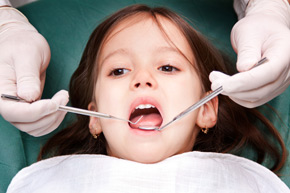Congenital Heart Disease

Each year in the United States, 40,000 newborns are born with a congenital heart defect and more that 50% will require at least one invasive surgery in their lifetime. Congenital heart defects (CHD) place children at risk for:
- Bacterial endocarditis: Dental procedures that involve disruption of the gingival tissue or oral mucosa may develop oral bacteremia.
- Bleeding risk: Children on anticoagulation therapies post surgical intervention are at risk for bleeding.
- Dental caries: Many patients with CHD take sucrose-containing medications several times daily.
- Xerostomia: Certain cardiac medications (diuretics, ACE inhibitors) may cause and increased risk.
- Malocclusion: Children with CHD have a higher incidence of malocclusion (mesiocclusion and distocclusion).
Alleviating Measures
- Obtain a thorough medical and dental history at each visit
- Consult with patients pediatric and/or cardiology provider to determine if antibiotic prophylaxis therapy is indicated or anticoagulant therapy should be paused
- Refer to the American Heart Association Guidelines on Antibiotic Prophylaxis (AHA, 2008)
- Rinse mouth with water and spit after taking liquid medications
- Chew sugar-free gum to stimulate salivary flow and restore moisture
- Use caries preventive measures (sealants, fluoride supplements, antimicrobial mouthwashes)
- Screen for significant crowding, abnormal dentition development, premature tooth loss and refer for orthodontia as indicated

